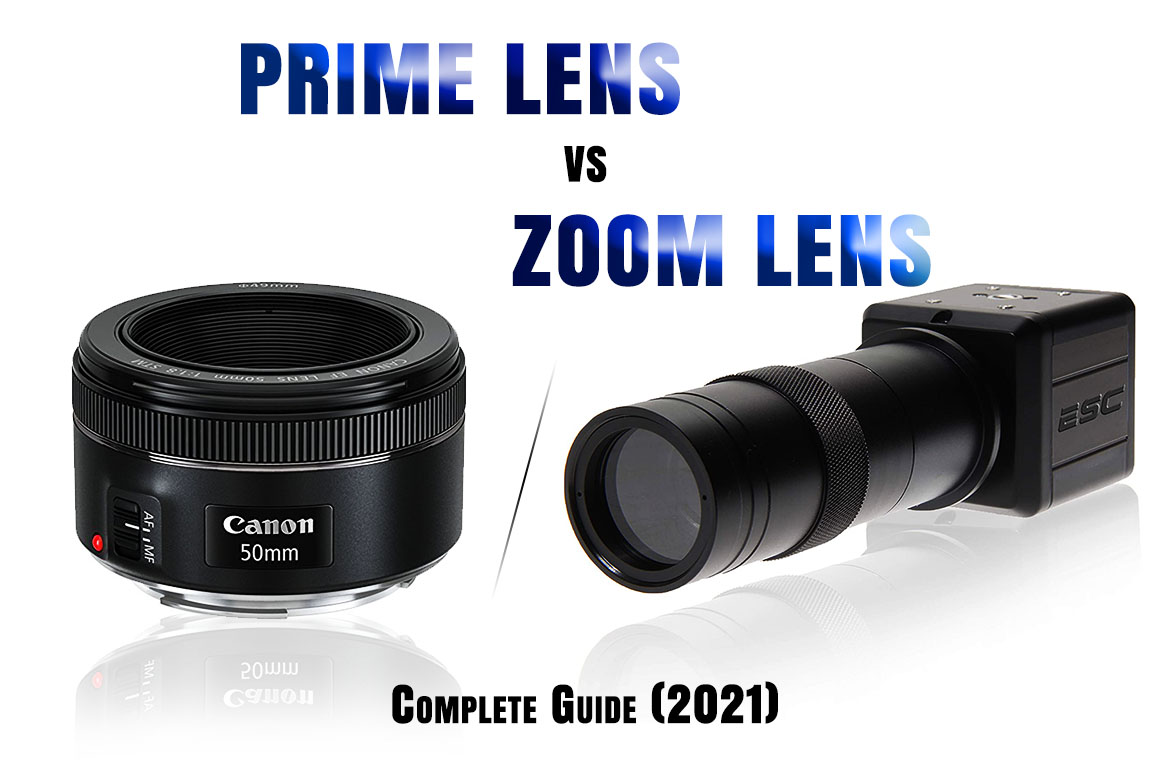The basic difference between a Prime Lens & Zoom Lens is that of the Focal Length.
((Focal length of the lens is the distance between the point of convergence in your lens to the sensor or film in your camera))
Prime Lens : A prime lens is a fixed focal length lens.
Zoom Lens : A zoom lens is a variable focal length lens.
Let’s dive into a detailed comparison :
| Prime | Zoom | |
| Size and weight | Smaller and lighter than average zoom lenses | Large and bulky |
| Portability | A prime lens has a fixed focal length, so you have to bring additional lenses of different focal lengths for various shooting ranges. | You need to bring just one zoom lens (instead of two to three prime lenses) that covers the full range of focal lengths. |
| Versatility | The focal length is fixed at one number and cannot be changed. To change the angle of view, the camera has to be physically moved. | Can handle a variety of shooting situations because of its variable focal length |
| Price | Cheaper because of its simple construction | More expensive, but the cost of one zoom lens can be quite similar to multiple prime lenses |
| Image Quality | Sharp and crisp photos even in low light | Standard quality; best for shooting scenes from afar |
| Speed | Generally faster in aperture; ideal for shooting fast-moving subjects | Doesn’t have fast aperture but makes up for it with image stabilization features like Canon’s Image Stabilization, Nikon’s Vibration Reduction, Sigma’s Optical Stabilization, or Tamron’s Vibration Compensation, which allow you to use extremely slow shutter speeds to take sharp photos of still objects. |
We can further look into few types of Prime & Zoom Lenses.
Types of Prime Lens:
| Standard | Captures images just as you see it. Comes in 35-80mm focal length. Most experts swear by the Canon EF 50mm f/1.4 USM AF Lens for starters. |
| Wide-angle | Enables snapping a broader view of a place or scene. Ideal for shooting large groups of people and landscapes. |
| Fish-eye | A variation of the wide-angle lens. Gives off the effect of a cross between a panoramic and a spherical perspective. |
| Telephoto | Brings distant subjects closer without distorting the image. Usually comes with a lens of 75-300 mm. |
| Super telephoto | Allows reaching more distant subjects with its 200-400 mm range. Bird photographers usually vouch for this lens. |
Types of Zoom Lens :
| Digital zoom | Crops the image to a smaller size then resizes it to fit the frame for a closer view |
| Optical zoom | Changes the focal length and increases magnification according to your preferred distance |
I hope through this article we have provided you the basic difference between a Prime Lens and a Zoom Lens.
You can check out our other articles to know more about each lens.
